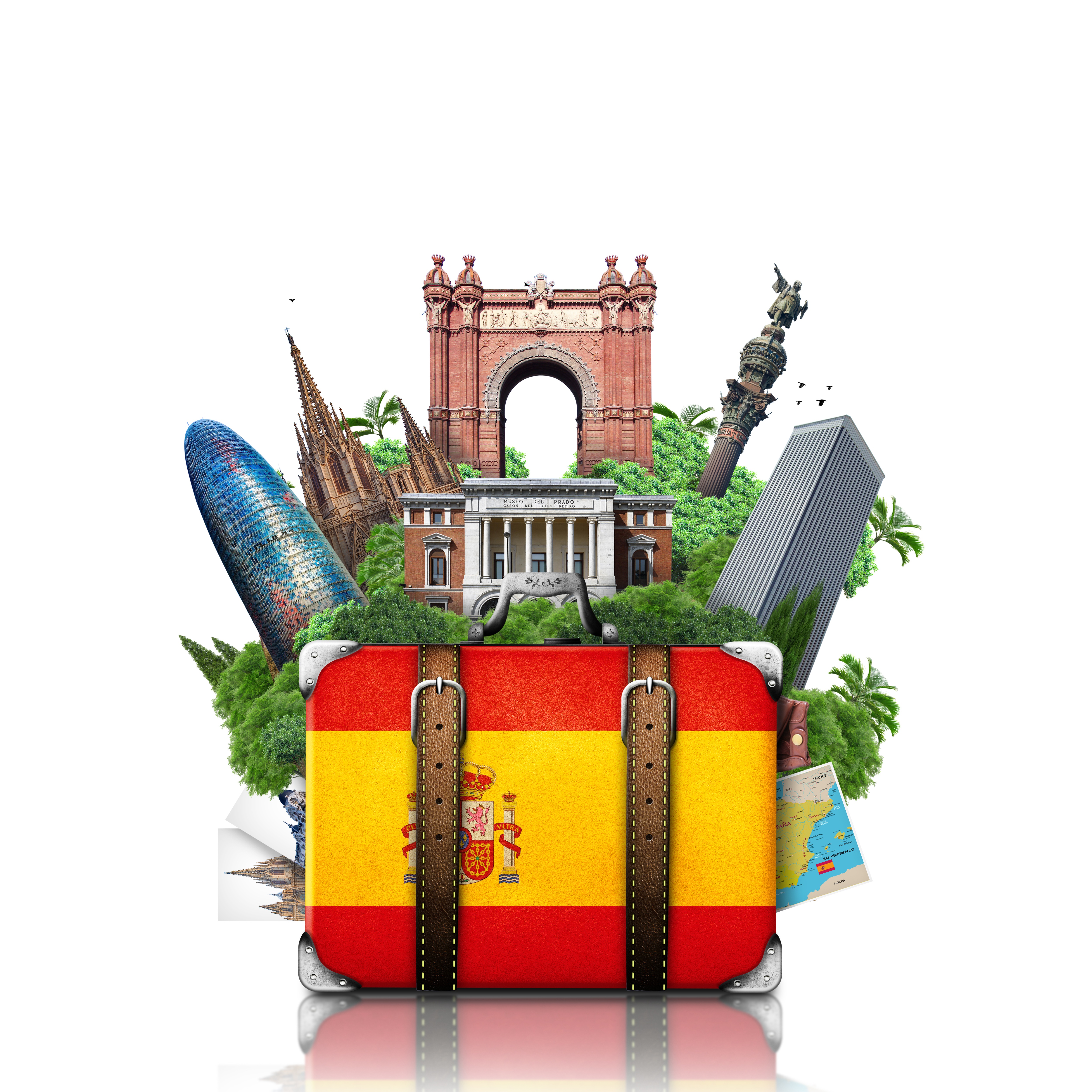Tour Operator Trends and Technology
By David Eddy on Apr 5, 2016 7:00:00 AM

Within the tour industry the trends of early 2016 are mirroring those of 2015: customers are increasingly looking for customized offerings that promise highly personalized travel experiences. It’s not surprising: who doesn’t want to return from a trip with a sense of having authentically experienced that part of the world? What travelers wouldn’t want to feel they really know something where they’ve been, and that where they’ve been is unique – more than just another gondola ride in Venice? The question is – how are savvy tour companies responding to these trends?
are increasingly looking for customized offerings that promise highly personalized travel experiences. It’s not surprising: who doesn’t want to return from a trip with a sense of having authentically experienced that part of the world? What travelers wouldn’t want to feel they really know something where they’ve been, and that where they’ve been is unique – more than just another gondola ride in Venice? The question is – how are savvy tour companies responding to these trends?
There appear to be three types of response. Some tour companies are choosing to treat these trends as primarily a small volume, niche market phenomena: intriguing, perhaps – but not justifying major changes to products or services. Others, possibly more aggressive or innovative, view the trends as an opportunity to not only grow sales and stay ahead of the competition but also a way to increase profit margins. A third group is sitting tight; viewing the best choice as waiting longer to be certain the trends have staying power.
The question the first and third group should be asking themselves is whether their reluctance to respond significantly – or at all – to these trends is influenced more by business judgement or an operating model technology that makes changes to products and services disruptive; lengthy; expensive – or all three.
Travel Technology as a Differentiator
Some concrete examples of how some operators are acting on these trends may serve to illustrate how business model flexibility plays a key role in a company’s adaptation to change.
One tour company that offers white water rafting trips now engages customers with customized trips that combine mild Class II rapids with fly fishing stops along the way. Interested clients can create a unique fly fishing experience from a menu of new services that include: furnished equipment; catered meals; fly fishing guide and lessons.
Another company with tours in major European cities offers new services that emulate a high-end concierge experience. Customers create a profile of likes and interests: their “concierge” then provides a range of customized activities to choose from for their particular city, such as cultural events combined with pre/post dining and walking tours. The point is to engage the clients in such a personalized way the entire experience exceeds expectations and becomes memorable.
In both of these examples the companies have translated local and regional expertise into services that fit travel industry trends and create opportunities for increased sales and higher profit margins. In terms of knowledge and experience, there’s no obstacle stopping the majority of tour operators from following suit in their respective markets.
One of the most common obstacles that exist is a business model running outdated technology incapable of quick, agile enhancements to support sales and marketing innovations. When a tour business has responsive technology, responding quickly to emerging – or declining – travel industry trends is not a disruptive or risky move. This makes travel technology an essential, competitive differentiator.
Important Tour Operator Software Features
One of the technology traps operators often fall into is the comfortable belief their competitors have software systems essentially the same as their own. Management looks at each other and says, “Seriously, how different can their software systems be from ours?” Perhaps, but here some features to look for in your own system to be sure.
Revenue Management: tour companies typically generate revenues by selling directly to consumers and also re-sellers such as travel agencies. A competitive tour operator software system should have features that enable:
- Customization: Unique travel products more likely to emerge when operators can easily combine and manage multiple travel services. The example of the company integrating white water rafting with customized fly fishing services is a case in point.
- Personalization: With innovative solution software, tour companies can go beyond current customization to truly personalized travel experiences for individual customers. The example of the company leveraging customer profiles to create a mix of cultural and dining is another case in point.
Of course, the entire point of revenue management is to optimize both revenues and margins. Since the very nature of customization and personalization is contrary to the product commoditization that leads to flat sales and shrinking margins, support for those two characteristics is support for revenue management itself.
Flexible: no one can predict the next major travel trend, but everyone can be certain it’ll quite different from what is seen today. Tour software must be flexible enough to mirror industry changes quickly and inexpensively; e.g. modular design for plug and play expansion of functionality.
Extensible: a software system must not only promote the success of a company’s business model, it must be able of accommodate growth easily and inexpensively. For instance, managing reseller distribution channels might not be in your company’s business model now, but it might in a short period of time. Are you confident your current software could support that expansion quickly and smoothly?
Transformational: does any operator’s operation closely resemble what existed even five years ago? Not for the most part. Changes over the next five years will be even more dramatic: is your system up to the challenge? For example, how comfortable are you that it will be able to provide:
- Product & Services Modeling: before new products and services are released, management should be able to model revenue and profitability under various scenarios to make well informed sales and marketing decisions.
- Scalable Reseller Support: will reseller support remain strong as volumes grow? The system should promote scalability by making resellers as self-sufficient as possible. For example, by supporting their ability to search, make & manage reservations; then extract vouchers and other information they need into a secure account portal.
- Scalable Customer Alerts: urgent customer communications delivered on time and clearly understood is foundational for strong customer service: e.g. warnings on status for upcoming events (imminent reservation cancellations; incomplete information, etc.). For reasons of human error and scalability, these emails and texts must be driven by automation actions which are easily configured.
- Dynamic Pricing: to protect market share and margins, necessary product & service pricing revisions or updates should be easily made on the company side and instantly populate through distribution channels by means of integrated web services.
- Data and Reporting: management decision-making should be supported by advanced reporting tools that access standardized operating data in a central repository.
This range of features may seem unrealistic for small to mid-sized tour operators, but the dcs plus, tour solution – AIDA, has become one of the fastest growing travel software products by providing this level of innovation and capabilities at very affordable prices. Management owes it to themselves and their company to take a close look.
Dive into the travel industry! Explore useful insights and trends through our free eBooks now!
- travel technology (58)
- Travel Industry (49)
- travel agency (31)
- travel erp (31)
- travel trends (28)
- travel booking system (23)
- TINA (21)
- travel company (19)
- Tour Operator (18)
- Product updates (17)
- Travel Management Company (17)
- AIDA (15)
- TBS (15)
- dcs plus news (14)
- tour operator solution (14)
- travel website (14)
- travel erp system (13)
- Business Travel (12)
- Mobile App (12)
- Travel App (12)
- mid back office solution (12)
- trends (12)
- Industry Events (11)
- Mobile Technology (11)
- TMC (11)
- travel agents (11)
- erp (10)
- erp system (10)
- Corporate Travel (9)
- Tour Operators (9)
- Travel booking engines (9)
- dcs plus (9)
- online travel agency (9)
- travel agent (9)
- Mobile Bookings (8)
- travel (8)
- travel agencies (8)
- 2017 (7)
- Mobile Travel (7)
- travel business (7)
- travel software (7)
- Digital Technology (6)
- Insider (6)
- Millennials (6)
- Online booking systems (6)
- Travel Management Companies (6)
- process automation (6)
- travel companies (6)
- Big Data (5)
- Business Traveler (5)
- Partners interviews (5)
- Tour Operator Software (5)
- customer retention (5)
- travel agency technology (5)
- Booking engines (4)
- CSBT (4)
- Mobile Device (4)
- OTAs (4)
- Static databases (4)
- Tour Companies (4)
- Travel Policy (4)
- Travel booking systems (4)
- Travel suppliers (4)
- back office automation (4)
- millennial travelers (4)
- online travel (4)
- responsive travel website (4)
- technology (4)
- travel website conversion (4)
- 2016 (3)
- Content mapping (3)
- Databases (3)
- Demographics (3)
- Food and Adventure Tourism (3)
- Mobile Apps (3)
- Mobile travel apps (3)
- Travel Distribution Channels (3)
- Travel Management Software (3)
- Travel customers (3)
- Travel history (3)
- anniversary (3)
- automated processes (3)
- content matching (3)
- global travel industry (3)
- social media (3)
- travel agency workflow (3)
- travel back office (3)
- travel marketing (3)
- travel process automation (3)
- Advanced Booking Systems (2)
- B2B Travel Resellers (2)
- Bleisure (2)
- Branding (2)
- Business Process Automation (2)
- Business Travelers (2)
- Customer engagement (2)
- Financial Reporting (2)
- Food Tourism (2)
- Inbound Marketing (2)
- Infographic (2)
- Leisure Travel (2)
- Saas (2)
- Templates (2)
- Travel Costs (2)
- Travel bookings (2)
- Travel start-up (2)
- Travel website abandonment (2)
- WTM 2016 (2)
- abandoned travel bookings (2)
- corporate self booking tool (2)
- engagement marketing (2)
- internet booking engine (2)
- millennial traveler (2)
- new travel company (2)
- office (2)
- online reputation management (2)
- online travel reviews (2)
- reporting (2)
- software (2)
- start-up tips (2)
- travel agency management (2)
- travel agency website (2)
- travel experience (2)
- travel mobile app (2)
- travel packages (2)
- travel reservation system (2)
- travel system (2)
- travelers (2)
- web-based travel erp (2)
- 2020 (1)
- 360 Customer View (1)
- Advanced Accommodation Contract Management (1)
- Adventure travelers (1)
- Apps (1)
- B2B Reseller (1)
- B2B Resellers (1)
- B2C (1)
- BI Reporting (1)
- Budget traveler (1)
- Cancellations (1)
- Chat (1)
- Chinese millennial (1)
- Cloud (1)
- Cognitive computing (1)
- Comparison shopping (1)
- Conference (1)
- Contact matching (1)
- Content (1)
- Cruise (1)
- Culinary traveler (1)
- Customer relations (1)
- Digital Innovation (1)
- Digital Natives (1)
- Documents (1)
- Emerging market travelers (1)
- Emerging markets (1)
- Errors (1)
- Experimental travel (1)
- Financial Dashboard (1)
- Import rates (1)
- Instant messaging (1)
- Integrate with Accounting Software (1)
- Internet (1)
- Luxury traveler (1)
- Mobile Transaction (1)
- Mobile payments (1)
- NDC distribution (1)
- Operational Reporting (1)
- Reseller networks (1)
- Resellers (1)
- Response (1)
- Subagents Network (1)
- TINA Academy (1)
- TTE (1)
- Travel Reseller Network (1)
- Travel Revenue Management (1)
- Travel booking problems (1)
- Travel finance reporting (1)
- Travel stats (1)
- WTM (1)
- abandonment (1)
- accomodations (1)
- advanced reporting (1)
- airline direct connect technology (1)
- ancillary services (1)
- cloud computing (1)
- collection (1)
- collection challenges (1)
- common data model (1)
- conversion rates (1)
- cost control (1)
- credo ventures capital invests in dcs plus (1)
- customer reviews (1)
- data analysis (1)
- dcs plus credo investment (1)
- dcs plus credo ventures (1)
- deloitte technology fast 500 EMEA (1)
- digital transformation (1)
- e-invoicing KSA (1)
- email marketing (1)
- email marketing for OTAs (1)
- erp e-invoicing (1)
- lost travel bookings (1)
- modern travel agencies (1)
- networks (1)
- new features (1)
- offers (1)
- online customer review (1)
- online reputation (1)
- online travel agencies (1)
- risk management (1)
- sales (1)
- senior travelers (1)
- shopping baskets (1)
- shopping carts (1)
- social network (1)
- standardized processes (1)
- static content (1)
- travel SaaS (1)
- travel account services (1)
- travel agency customers (1)
- travel agency profitability (1)
- travel analytics (1)
- travel blog (1)
- travel planning (1)
- travel reviews (1)
- travel shopping carts (1)
- travel software for agencies (1)
- travel software system (1)
- travel technology europe (1)
- travlist smart mobile app (1)
- trend (1)
- trusted adviser (1)
- trusted advisor (1)
- upsell functionality (1)
- vouchers (1)
- website traffic (1)
- zatca (1)
Subscribe by email
You May Also Like
These Related Stories

Travel Technology means Growth for Tour Operators

Innovative Tour Operator Software drives Sales & Profits (does yours?)


Comments (1)